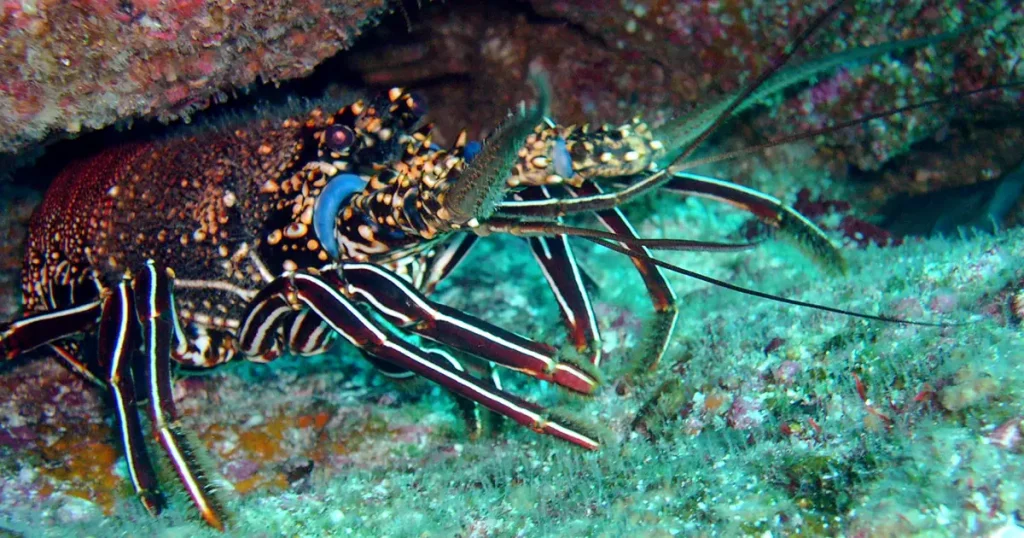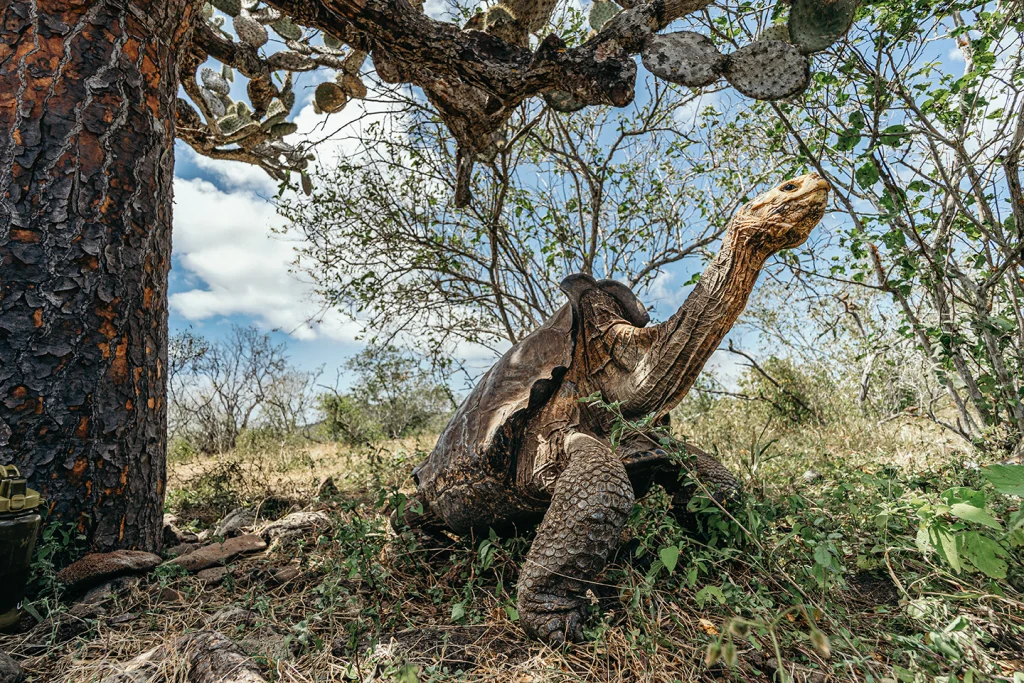The Red Lobster of Galápagos
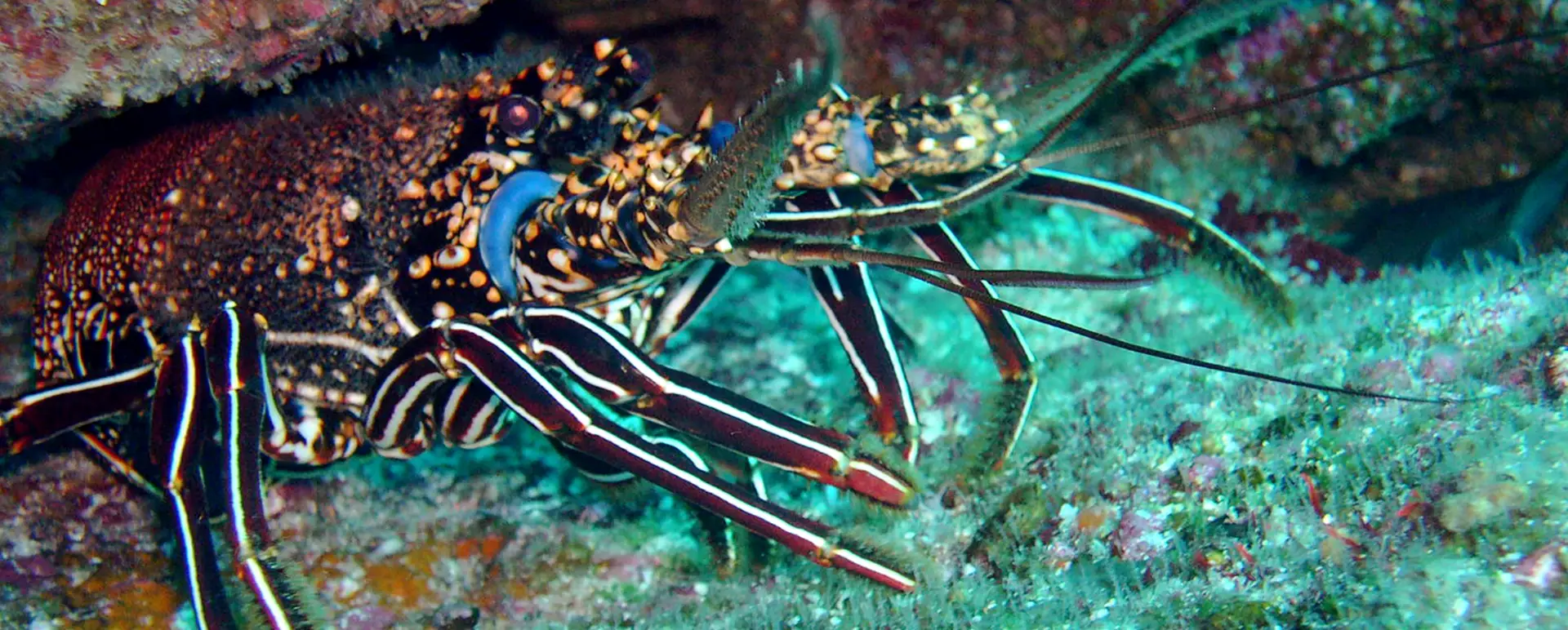
It may not have the size of a giant tortoise or the wings of an albatross, but beneath the waves, the red spiny lobster plays a vital role in keeping Galápagos’s marine ecosystems healthy — and in sustaining the livelihoods of hundreds of island families.
A Species that Signals Ecosystem Health
While most visitors to Galápagos come hoping to spot tortoises, sharks, or blue-footed boobies, few realize that another creature —the red spiny lobster (Panulirus penicillatus)— reveals much about the health of these waters.
The species lives among rocky reefs, sheltering in crevices and caves during the day, and emerge at night to forage along the ocean floor. This lobster doesn’t have claws like its continental relatives; instead, it uses its long, spiny antennae to detect movement and predators.
Its deep crimson shell makes it not only a natural icon but also a cultural one —a species revered by local fishers, who call it “the queen of the sea.” And they’re right: where lobsters thrive, the ocean is in balance.
A Story of Science, Harvest, and Sustainable Management
In 2024, fishers across Galápagos caught 108 tons of red spiny lobster, according to the Galápagos National Park Directorate (GNPD).
A total of 338 fishers and 137 licensed boats participated in the 2024 season, which runs from July to December under strict regulations. Each lobster harvested must meet specific biological criteria —a minimum size of 26 centimeters in total length (or 15 centimeters for the tail)— and capturing egg-bearing females is strictly prohibited.
These measures ensure that the species continues to reproduce, keeping its populations stable and maintaining its ecological role as a grazer that helps regulate invertebrate and algal communities, while serving as prey for groupers, octopuses, and other marine predators.
Lobster fishing season defines island life: docks fill with the morning bustle of fishers, park rangers check sizes and records, and local restaurants serve freshly caught lobster to visitors discovering one of Galápagos’s most authentic flavors.
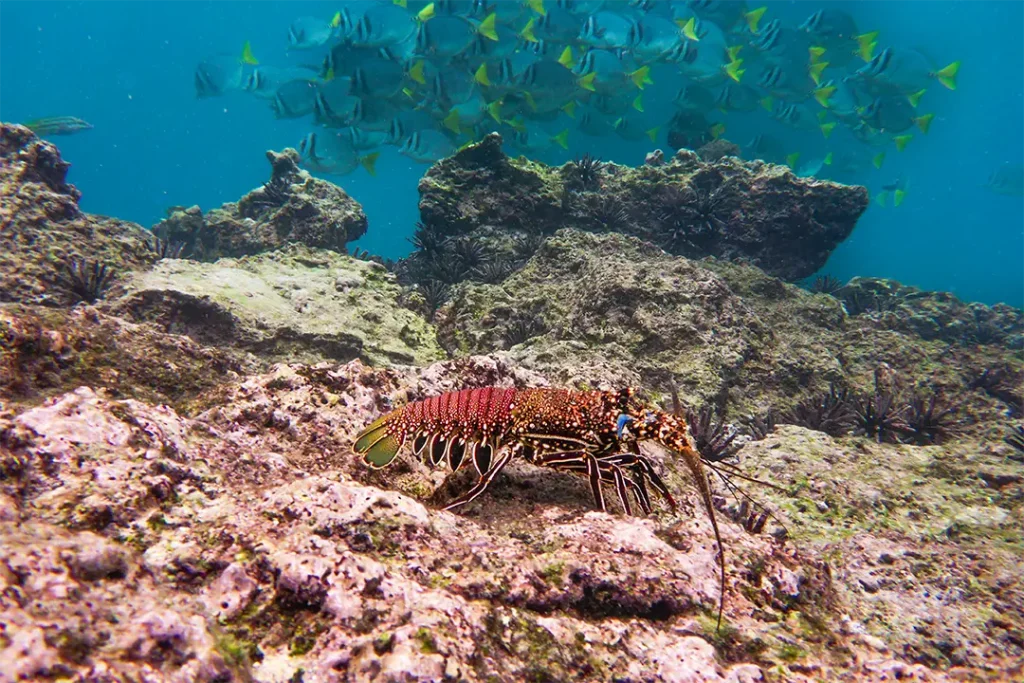
The Pulse of the Ecosystem
For scientists and managers, the red spiny lobster is a biological compass that helps measure the health of coastal ecosystems.
When its populations decline, it signals that something is changing —whether from overfishing, habitat loss, or oceanic variation such as El Niño events. Continuous monitoring allows scientists to detect imbalances early and adjust management measures before the impacts become irreversible.
Within the Galápagos Marine Reserve, no-take zones have shown encouraging results: where the ocean is allowed to rest, lobsters return. Their numbers rise, and reefs recover, proof that conservation works when science and community move in the same direction.
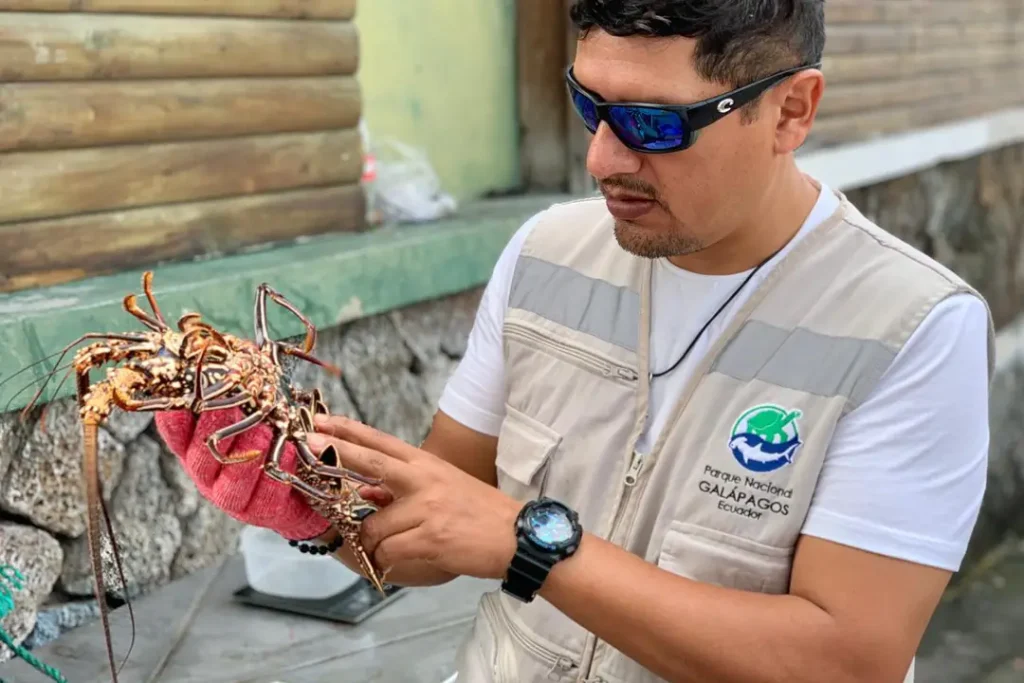
Beyond the Catch
In the restaurants of Santa Cruz, Isabela, and San Cristóbal, the red spiny lobster is a seasonal highlight —a delicacy enjoyed by visitors.
Each meal also represents a network of effort that keeps Galápagos’s promise of sustainability alive. For fishers, following the rules isn’t just a legal requirement —it’s a commitment to their own future and to the ocean that sustains them.
The Broader Message
Protecting the red spiny lobster means protecting a key element of Galápagos’s marine balance.
Galápagos’s wonder lies not only in its iconic species, but also in the lesser-known creatures that sustain the health of these islands.
Share:
